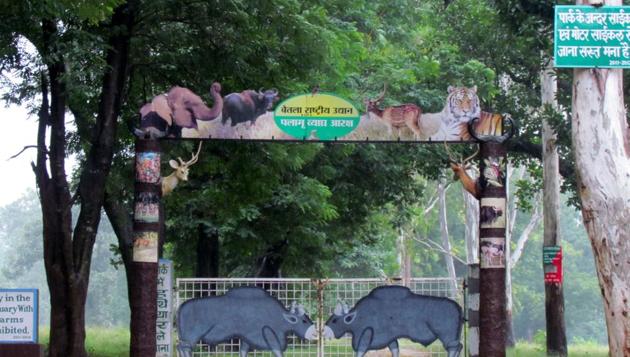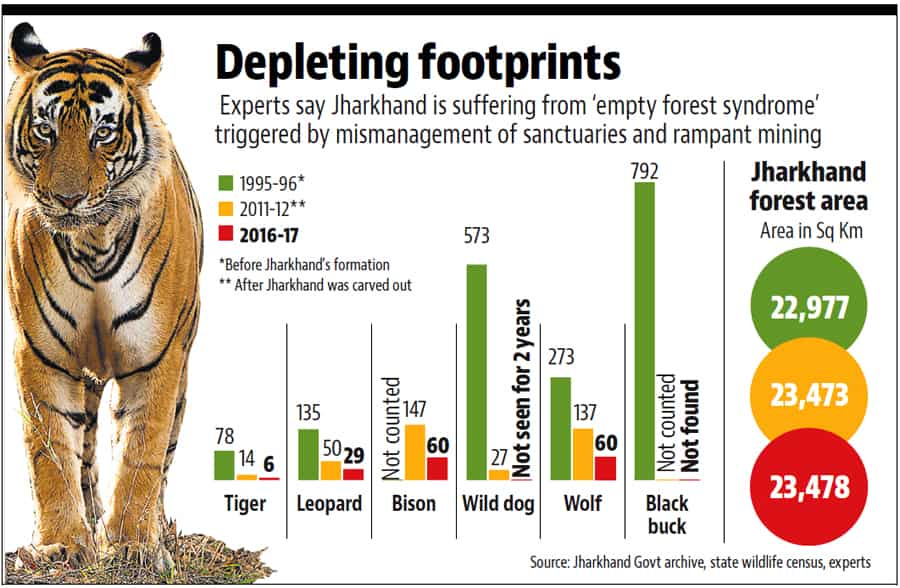Wildlife numbers fall in Jharkhand even as forest cover increases
Experts say Jharkhand is suffering from ‘empty forest syndrome’, underlining the deterioration of forest ecosystems.
Black bucks no longer bellow here and the Chinkara’s snort is barely heard in Jharkhand now.

The presence of around a dozen wildlife species , including the tiger and leopards , and birds such as the great spotted eagle appears to be diminishing in a state where the forest cover has increased in the past decade.
Experts say Jharkhand is suffering from ‘empty forest syndrome’, underlining the deterioration of forest ecosystems.
Forest officials blame the hunting culture of tribals for the syndrome but experts blame mismanagement of sanctuaries, poaching, rampant mining and inadequate forest security system for the predicament.

One of the first counts of wildlife in the region was done in 1894-95 and 1896-97 by DME Sunder, who enumerated a huge population of Chinkara and blackbucks in then Palamau, which included the present Latehar and Garwha districts.
“But, the two animals are no longer seen here,” state wildlife board member DS Srivastava said. No blackbuck was reported in the state wildlife census conducted in 2011-12, which officials say, proves that the specie no longer exists in the state.
The population of the tiger, which was 71 in 1995, also came down to just three in 2014. These figures paint a worrisome picture, especially since the tiger population saw a 30% rise from 2010- 2014 in the country.
The sorry state of Sanctuaries
The Jharkhand government has failed to declare ecologically sensitive zones (ESZ) for 10 of the 11 wildlife sanctuaries, which experts say has led to unchecked stone quarries, tree felling, encroachment and construction work in the buffer zones of the wildlife reserves.
The Supreme Court order in 2006 had asked states and union territories to propose geographical extent of ESZ to the environment ministry so as to protect them from industrial pollution and unregulated development under the Environment Protection Act of 1986.
Hindustan Times visited the Hazaribag sanctuary and found more than 100 stone quarries and crushing units, which use detonators for blasting rock, operating in the periphery of the reserve. A HWS forest guard, who did not wished to be quoted, said, “With increasing disturbances tigers have vanished while leopards are hardly seen.”
Official response
Jharkhand’s chief wildlife warden LR Singh admitted that wildlife was decreasing in Jharkhand forests and termed the hunting culture in tribal community as a major reason for the decline.
“Killing animal is a part of tribal culture. There is festival called Bishu in Jharkhand when thousands of tribal enter forests to kill animals,” Singh said.
However, pointing to another reason for the fall in wildlife numbers, Srivastava said the health of sanctuaries started deteriorating in 1990s when the budget was cut and vacancies were not filled. “Poachers got easy access as foresters kept away fearing Maoists,” he said.
Satya Prakash, state coordinator of Indian Bird Conservation Network (IBCN), said: “Wildlife and bird conservation have become recreational words. No serious initiative was taken in this regard so far,” he said.




